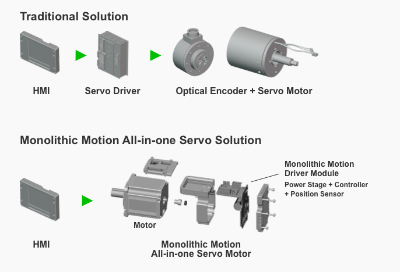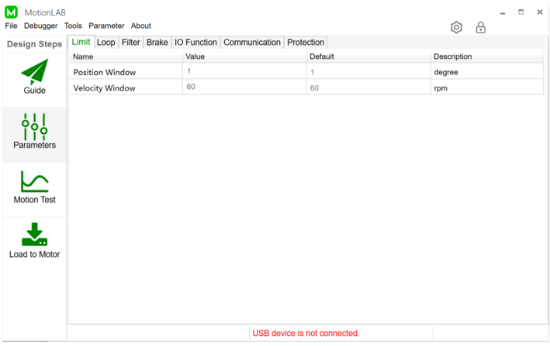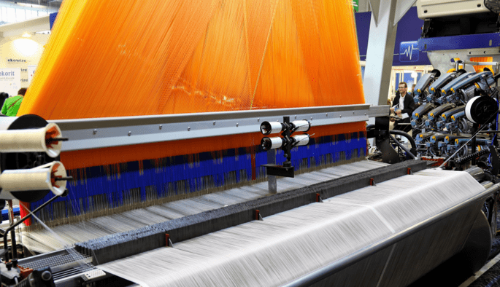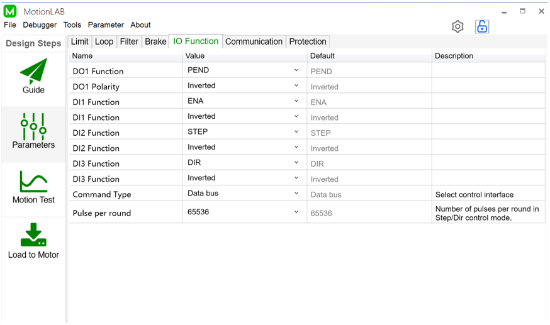EZmotion: The Next Stage in Highly Integrated Motors
Introduction
Traditional motors are often bulky, expensive, and complicated because they rely on the cooperation of unique components in an overall system. Because there are so many parts, these solutions require ample testing to fine-tune the system’s configurations and determine the basic parameters. The introduction of integrated smart motors is helping to streamline this often tedious process. Integrated motors are more compact, and require less space and fewer cables than their traditional counterparts. They can also provide automatic configurations and updates using a graphical user interface (GUI).
This article will describe the basics of an integrated motor solution, with a primary focus on all-in-one servo motors. Then it will discuss the benefits and recommended applications for integrated servo motors using the MMS757xxx family from EZmotion, an integrated servo motor series that can supply up to 188W of power for a wide array of applications.
Integrated Motors
Traditional systems include a motor, controller, drive power supplies, feedback devices, and potentially complex cable networks. This means that designers often have to spend a significant amount of time trying to find the optimal configurations between the motors, drives, cables, and circuitry. These additional tests increase design costs, time-to-market, and system size, which can make it difficult to fit other critical components into the required footprint.
In contrast, integrated smart motors are comprised of three basic components: a motor, controller, and feedback (see Figure 1). These motors can be selected based on a few main criteria, such as size, power, IP rating level, connection type(s), and their type of communication protocol.

Figure 1: Integrated vs. Traditional Solutions
For example, consider servo motors. A typical servo motor consists of control circuitry, the motor, and a position encoder. EZmotion provides all-in-one servo motors that have an integrated control circuit, power stage, and position sensor. These integrated solutions can be directly connected to the HMI without the additional connectors and fine-tuning required by traditional solutions, such as a separate servo driver, optical encoder, and servo motor.
Note that there is another type of integrated solution that uses a stepper motor. Stepper motors are physically smaller, operate in open-loop control, and do not require a feedback device. For simplicity, this article will focus on smart all-in-one servo motors.
Benefits of Integrated Motors
Integrated motors reduce external component count (and cost), and time-to-market. Traditional configurations separate the drive circuit from the motor, which leads to a smaller motor footprint, while integrated configurations tend to weigh more and have a larger motor footprint. However, integrated motors reduce the overall footprint, which provide flexibility for external device selection (e.g. sensors). Integrated motors also reduce the footprint for cabling and move the circuity to the motor, which frees up panel space (fewer terminal block connections, driver mounts, and cooling and heat dissipation systems).
Increased reliability is one of the major benefits of integrated motors, since there are fewer parts and connections. Because traditional systems rely on a system of unique parts that are prone to their own failures, there is an increased chance of one part experiencing a failure that affects the overall system. This results in additional testing to determine which part has failed, as well as additional resources to resolve the failure. On the other hand, if an integrated motor experiences a failure, there are fewer parts to test and/or replace.
Non-integrated motors also require at least two cables that come out of the motor. These cables, which run through the system to power the motor and sensor, can be up to 20 or 30 feet. If more cables are needed, this can result in a complex system that takes up a significant amount of space. With an integrated motor, designers only have to worry about supplying power and a communication interface to each motor. Less cabling and a shorter cabling distance between the motor, feedback, and driver can also help reduce noise and power consumption.
Commissioning a servo system for the first time can be a challenge for many users. This process requires an extensive amount of preliminary work before the device can be used. After connections are completed and the system powers up, tuning is required in order for the motor to operate properly. With EZmotion integrated servo motors, users can use the auto-tune function to have an operational system within seconds (see Figure 2). Once a user inputs their basic parameters, EZmotion’s MotionLab software calculates the remaining parameters, which simplifies the overall design process by removing potentially lengthy and expensive testing.

Figure 2: MotionLAB – Parameters
Applications Using Integrated Motors
Integrated motors can be implemented in numerous applications, several of which are described below:
1. Textiles: Large-scale machinery is required to create textiles that are consistent across thousands of iterations. Textile machines rely on the coordination of multiple motors, which must achieve accurate positioning and high velocity to meet the demanded output. Integrated motors enable a compact solution for these highly precise systems.

Figure 3: Textile Machine
2. Medical: High-accuracy motor control solutions are popular in the medical industry because they are efficient, compact, precise, and quiet. Integrated motors can be implemented in a wide array of medical equipment, such as imaging and diagnostic equipment, dispensers, electric wheelchairs, and surgical robots.
3. Printing:Integrated motors are useful in 3D printing because they can help deliver precise, multi-axis motion in three linear degrees of freedom (X, Y, and Z). This can be particularly useful when printing complex products and components, since a single error could result in having to restart the process and losing time/resources from the failed print.
4. Robotics: Robots, such as automated guided vehicles (AGVs), can benefit from integrated motors by delivering precise motor control and smart auto-tuning in a small package size. Regeneration capability can also be employed to make efficient use of energy generated during motion.
EZmotion's Integrated Motors
EZmotion provides two families of all-in-one servo motors with one of two frame sizes. The first is the MMS742xxx family, which has a 42mm (NEMA 17) motor. The second is the MMS757xxx family, which has a 57mm (NEMA 23) motor. Both families have an integrated brushless DC (BLDC) motor driver module (see Figure 4).

Figure 4: All-In-One Servo Motors
The MMS742xxx and MMS757xxx families are recommended for indexing applications due to their position accuracy and quick response, applications with stepper positioning/indexing, and material handling applications due to their stable torque at any speed. For the best performance, it is recommended to choose a device that provides q power output matching the application requirement.
Table 1 shows a summary of the differences between the products in this family.
Table 1: All-In-One Smart Servo Motors
| Part Number | Flange Dimension (mm) | Power (W) | Nominal Voltage (V) | Control Mode | Control Interface |
| MMS757094-36-R1-1 | 57 | 94 | 36 | PP, PV, PT | RS-485, I/O |
| MMS757141-36-R1-1 | 57 | 141 | 36 | PP, PV, PT | RS-485, I/O |
| MMS757188-36-R1-1 | 57 | 188 | 36 | PP, PV, PT | RS-485, I/O |
| MMS757094-36-S1-1 | 57 | 94 | 36 | PP, PV, PT | Step/direction |
| MMS757141-36-S1-1 | 57 | 141 | 36 | PP, PV, PT | Step/direction |
| MMS757188-36-S1-1 | 57 | 188 | 36 | PP, PV, PT | Step/direction |
| MMS742038-24-R1-1 | 42 | 38 | 36 | PP, PV, PT | RS-485, I/O |
| MMS742052-24-R1-1 | 42 | 52 | 36 | PP, PV, PT | RS-485, I/O |
| MMS742077-24-R1-1 | 42 | 77 | 36 | PP, PV, PT | RS-485, I/O |
| MMS742105-24-R1-1 | 42 | 105 | 36 | PP, PV, PT | RS-485, I/O |
| MMS742052-24-S1-1 | 42 | 52 | 36 | PP, PV, PT | Step/direction |
| MMS742077-24-S1-1 | 42 | 77 | 36 | PP, PV, PT | Step/direction |
| MMS742038-24-S1-1 | 42 | 38 | 36 | PP, PV, PT | Step/direction |
| MMS742105-24-S1-1 | 42 | 105 | 36 | PP, PV, PT | Step/direction |
A few of these features are described below in greater detail.
Control Interface
Consumers can select an all-in-one servo that either has a step/direction, I/O, or an RS-485 interface. An I/O interface requires physically connecting the I/O to a signal (e.g. a push-button). This signal can serve many purposes, such as starting or stopping the motor.
For most applications, a step/direction interface is the typical motor control method. For a step/direction interface, users can input pulses to advance the motor while the direction signal determines the direction.
An RS-485 interface is a form of serial communication that is used to send and receive data to the device. RS-485 allows for the integration of multiple motors and devices such as touch panels, PLCs, and computers. This interface not only allow the user to control the motor, but also change parameters and obtain feedback information.
The control interface and its related parameters can be set via the MotionLab software (see Figure 5).

Figure 5: Using MotionLab Software for the Control Interface
Control Modes
EZmotion’s all-in-one smart servo motors support three control modes:
1. Profile position (PP): PP control mode moves to a position relative to the previous target position or latest reference position.
2. Profile velocity (PV): PV control mode allows the motor to reach a target velocity and continue to move at this velocity.
3. Profile torque (PT): PT control mode provides a constant torque, which is generated by the target torque and the rate of change of torque.
Conclusion
As industries continue to prioritize compact solutions that deliver high power, precision, and excellent efficiency, smart integrated motors will become more popular due to their ability to offer fast communication, configurability, and dynamic performance in space-constrained systems. In addition, integrated motors feature enhanced reliability and a lower cost than their traditional counterparts.
EZmotion’s all-in-one servo motors make it simple to find an integrated motor to meet your application’s needs.



Validate your login
Log in to your account
Create New Account